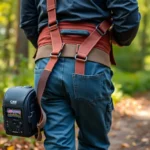
Introduction
Teaching your dog to communicate using buttons is an innovative and engaging way to enhance the bond between you and your furry friend. This method allows dogs to express their needs and desires more clearly, bridging the communication gap that often exists between humans and canines. Understanding how to teach your dog to talk with buttons can significantly improve your interactions, making training sessions more productive and fun.
In this article, we’ll explore the fundamentals of canine communication, the benefits of using buttons, and provide a step-by-step guide to help you and your dog embark on this exciting journey. By the end, you will be equipped with the knowledge to start teaching your dog to communicate effectively using buttons.
Understanding Dog Communication
Natural Communication Methods
Dogs have their own ways of expressing themselves, primarily through barking, body language, and facial expressions. Barking can indicate excitement, fear, or even a desire to play, while their body language—like wagging tails or lowered ears—can convey a multitude of emotions. Understanding these natural communication methods is crucial for any dog owner, as it helps in interpreting your pet’s needs and feelings.
Why Use Buttons?
Button communication is an innovative training method that allows dogs to express themselves in a way that is more understandable to their human companions. By teaching your dog to use buttons, you can foster clearer communication. This method not only benefits the dog by reducing frustration when trying to convey a message but also strengthens the bond between owner and pet. With buttons, dogs can learn to ask for specific things like “outside,” “play,” or “food,” making interactions more fulfilling for both parties.
Preparing for Training
Choosing the Right Buttons
The first step in your journey to teaching your dog to communicate with buttons is selecting the right tools. There are several types of buttons available, including:
- Recording buttons: These allow you to record specific phrases, enabling personalized communication.
- Pre-recorded buttons: These come with common phrases like “walk” or “treat,” which can be useful for beginners.
When selecting buttons, consider durability, ease of use, and sound quality. Recommended brands include FluentPet and My Talking Pet, both of which offer reliable products suited for dog training.
Creating a Training Space
Setting up a distraction-free environment is essential for effective training. Choose a quiet area in your home where your dog feels comfortable and safe. Remove any distractions, like toys or other pets, that may hinder your dog’s focus. A calm environment allows your dog to concentrate on learning and makes the process smoother.
Gathering Training Supplies
Before you begin training, gather essential supplies, which may include:
- Buttons (recording or pre-recorded)
- Treats for positive reinforcement
- Clicker for marking desired behaviors (optional)
Consistency is key to successful training, so ensure that you have everything ready before starting your sessions. Positive reinforcement not only helps in teaching commands but also encourages your dog to engage in learning.
Step-by-Step Training Process
Introduction to the Buttons
To introduce the buttons to your dog, begin by allowing them to explore the buttons at their own pace. Place a button on the ground and demonstrate its function by pressing it and rewarding your dog with a treat immediately afterward. This creates a positive association with the button. Repeat this a few times until your dog shows curiosity about the button.
Associating Buttons with Actions
Once your dog is familiar with the buttons, it’s time to teach them to associate specific buttons with their needs. Start with one button, like “outside.” Press the button while saying “outside” and then take your dog outside. When they press the button, immediately reward them with praise or a treat. This step reinforces the connection between the button and the desired outcome.
Gradually Expanding Vocabulary
As your dog becomes comfortable with one button, you can gradually introduce additional buttons. Start with two buttons—perhaps “outside” and “food.” Make sure to use clear and distinct phrases for each button. Avoid overwhelming your dog by introducing too many buttons at once; instead, add them slowly and ensure your dog has mastered each one before moving on.
Consistency and Repetition
Regular practice sessions are vital for reinforcing learning. Aim for short, engaging training sessions that last between 5 to 10 minutes. Keeping the sessions fun and interactive will help maintain your dog’s interest. Use varied rewards, such as treats or playtime, to keep your dog motivated and excited about learning.
Troubleshooting Common Issues
Dog Not Pressing the Button
If your dog is hesitant to press the button, it could be due to fear or uncertainty. Ensure that they have had enough exposure to the button and try to encourage them by demonstrating the action again. You may also need to increase the value of the reward to motivate them further. Patience is key—some dogs may take longer to adapt than others.
Confusion with Multiple Buttons
If your dog seems confused by multiple buttons, simplify the learning process by reducing the number of buttons in play. Focus on one or two buttons at a time until your dog has mastered them. Once they are comfortable, gradually introduce new buttons. Consistent verbal cues can also help them differentiate between the buttons.
Lack of Interest in Training
If your dog shows a lack of interest in training, try incorporating playtime or new types of rewards to reignite their enthusiasm. Changing your approach can make the training sessions feel more like a game rather than a chore. Be sure to assess the environment as well—sometimes, a change of scenery can inspire new interest.
Advanced Techniques and Tips
Using Buttons for Complex Commands
Once your dog has mastered basic button communication, you can begin teaching them multi-step commands. For example, you could teach your dog to press a button for “play,” and then another button for “ball.” This approach allows for more complex interactions and enriches the training experience. The key is to introduce one step at a time, ensuring your dog understands each action before progressing.
Incorporating Playtime into Training
Mixing play with training can enhance your dog’s learning experience. For instance, after a successful training session, engage your dog in a game of fetch or tug-of-war. This not only reinforces the training but also strengthens your bond. By making training enjoyable, your dog will look forward to sessions rather than see them as a task.
Using Technology to Enhance Training
Consider using technology to support your training efforts. Various apps and devices can help track your dog’s progress and provide additional resources for training. For example, apps like Pawtrack can offer reminders for training sessions, while smart devices can be programmed to play sounds or phrases that you can use in your training.
Real-Life Examples and Success Stories
Case Studies of Successful Button Training
Numerous dog owners have successfully taught their pets to communicate using buttons. For instance, a golden retriever named Bella learned to express her needs by pressing buttons for “walk,” “play,” and “treat.” Bella’s owner reported that this method significantly reduced her frustration when trying to convey her desires, leading to a more harmonious home life.
Testimonials from Dog Owners
Many dog owners have shared their positive experiences with button training. One owner noted, “Teaching my dog to communicate with buttons has changed our lives. Now, instead of barking or whining, he simply presses the button for ‘outside,’ and we both understand each other much better.” These testimonials highlight the transformative power of effective communication through buttons.
Conclusion
Teaching your dog to communicate using buttons is an enriching experience that enhances the bond between you and your pet. By understanding canine communication, preparing effectively, and following a structured training process, you can successfully teach your dog to express their needs and desires. Remember that patience and consistency are key to achieving success. So, embark on this exciting journey, and enjoy the newfound clarity in your interactions with your furry friend!









